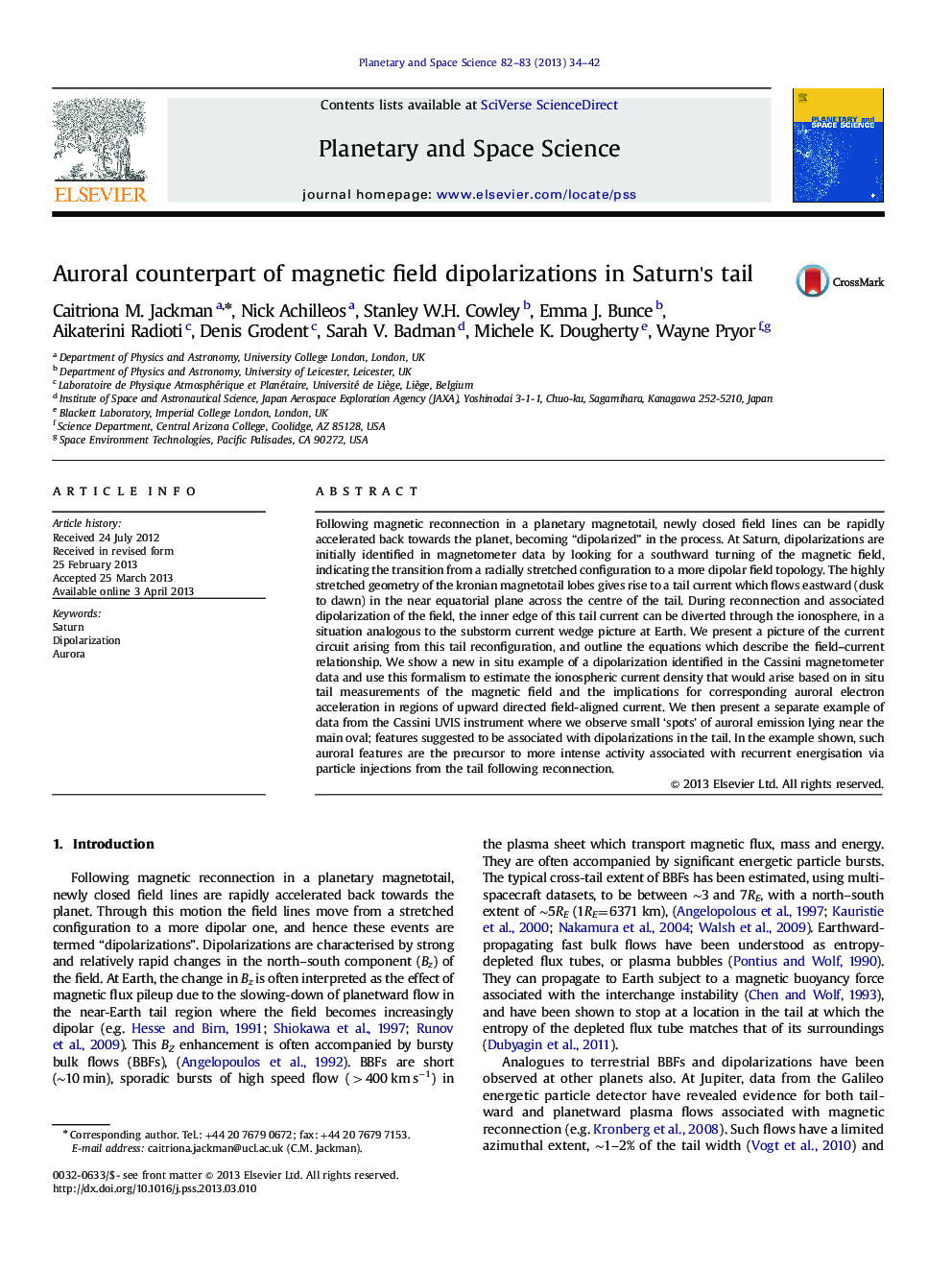| Article ID | Journal | Published Year | Pages | File Type |
|---|---|---|---|---|
| 1781256 | Planetary and Space Science | 2013 | 9 Pages |
•New in situ example of a dipolarization in Saturn's magnetotail.•New theoretical formalism to link field dipolarization with ionospheric counterpart.•Auroral images of discrete spot of emission suggested to be linked to dipolarization.
Following magnetic reconnection in a planetary magnetotail, newly closed field lines can be rapidly accelerated back towards the planet, becoming “dipolarized” in the process. At Saturn, dipolarizations are initially identified in magnetometer data by looking for a southward turning of the magnetic field, indicating the transition from a radially stretched configuration to a more dipolar field topology. The highly stretched geometry of the kronian magnetotail lobes gives rise to a tail current which flows eastward (dusk to dawn) in the near equatorial plane across the centre of the tail. During reconnection and associated dipolarization of the field, the inner edge of this tail current can be diverted through the ionosphere, in a situation analogous to the substorm current wedge picture at Earth. We present a picture of the current circuit arising from this tail reconfiguration, and outline the equations which describe the field–current relationship. We show a new in situ example of a dipolarization identified in the Cassini magnetometer data and use this formalism to estimate the ionospheric current density that would arise based on in situ tail measurements of the magnetic field and the implications for corresponding auroral electron acceleration in regions of upward directed field-aligned current. We then present a separate example of data from the Cassini UVIS instrument where we observe small ‘spots’ of auroral emission lying near the main oval; features suggested to be associated with dipolarizations in the tail. In the example shown, such auroral features are the precursor to more intense activity associated with recurrent energisation via particle injections from the tail following reconnection.
